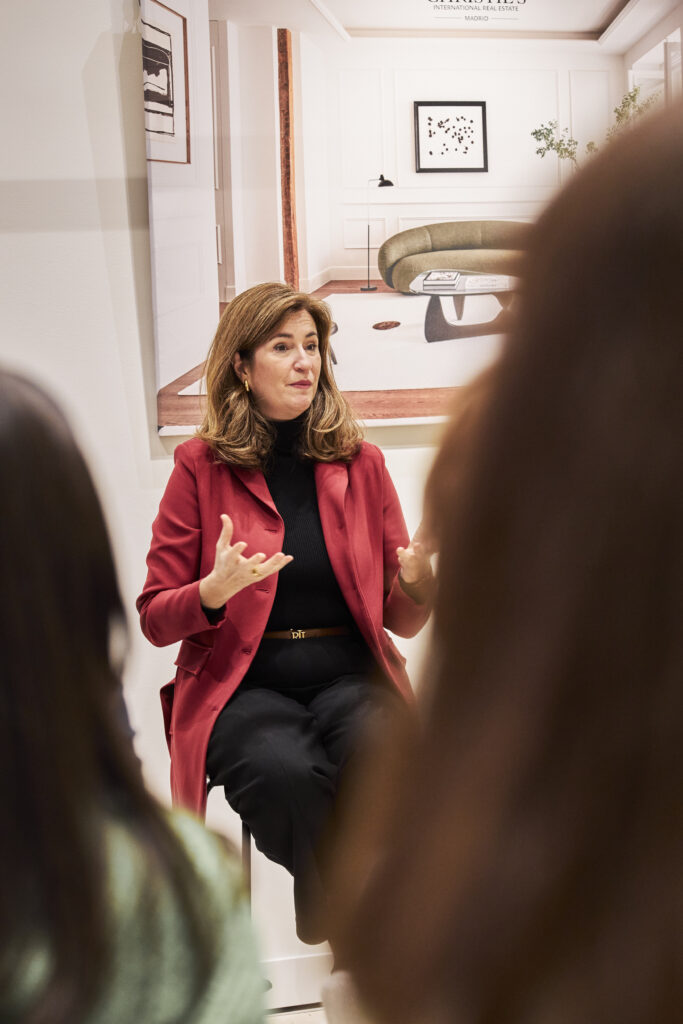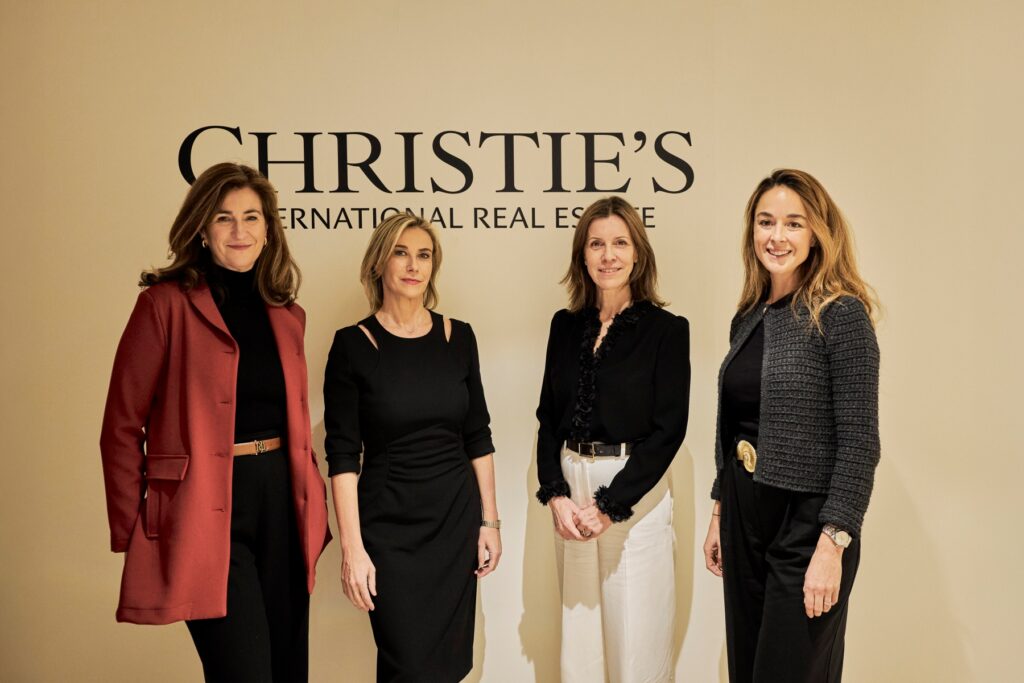The business world is changing quickly, and old ways of leading don’t always work anymore. Raquel Sáez, the founder of ARThink, believes creativity is the missing piece. She’s found a way to connect lessons from classical art with leadership, helping business leaders think in new and more innovative ways.
Raquel’s approach is about more than just inspiration. She uses the strategies of famous artists from history to teach leaders how to solve problems and see challenges differently. Her work is helping executives and teams unlock new ideas and grow in ways they didn’t think were possible. Today, we will interview Raquel Saez to learn how she is changing corporate leadership by using artistic creativity.
1. What gave you the idea to mix art with leadership? Was there a specific moment that inspired you to start ARThink?
My fascination with the business world emerged unexpectedly. Although my father was an entrepreneur and businessman, one of the experiences that impressed me the most—some time ago—was attending a training session on agile methodologies by Néstor Guerra. I had so much fun that I thought, if I ever leave the art world, this is what I would love to do.
The curious thing is that I never thought I could connect it with art. However, after reading authors like Brian Tracy, Mike Michalowicz, and Tom Peters, I realized that the dynamics of a business are not so different from those of an artist’s career. I began to wonder if it would be more interesting to introduce this perspective during my future visits with clients at the Thyssen Museum.
I decided to test the idea, and I saw that it worked. Everything started to take shape little by little, and in August 2023, I officially named the project: ARThink – Creative Thinking Through Art. It was a natural evolution of my 15+ years of experience leading visits for companies and executives.
Today, ARThink merges art with business strategy and personal well-being, offering the benefits of transformative encounters through training itineraries, keynote speeches, and workshops. In these experiences, we teach art in connection with leadership and creativity, bridging the gap between artistic insight and strategic thinking.
2. At ICONS 2024, you discussed how creativity helps humanity move forward. How do you think art and history can shape the way future leaders think?
At ICONS 24, my lecture Beyond the Frame raised a fundamental question:
Art conservation is not just a technical task but a shared responsibility that can inspire new forms of leadership. Art and history teach us that progress happens when there is awareness, knowledge, and commitment. In business, this translates into the ability to observe, reflect, and act with strategic vision.
During the lecture, I explored how museum visitors—and by extension, companies—can become active agents in conservation, provided that institutions take responsibility for educating their audience. It is essential to provide information on why a piece is considered a masterpiece and how we work to preserve it. If we want people to recognize the importance of safeguarding our cultural legacy—the one that shapes our identity as individuals and as a nation—we must take them beyond the frame.
When we educate leaders about the significance of art and history, we equip them with the tools to analyze challenges from multiple perspectives, foster cultural sensitivity, and understand that every decision they make contributes to a greater legacy.
It is not just about learning from the past, but about using that knowledge to build a future that is broader in vision, more creative, and profoundly human.
3. A lot of businesses focus on numbers and results. How do you convince leaders that creativity is worth their time?
Companies often focus on numbers and results, but no leader has ever achieved great transformations without first questioning where they want to go.The great masters of art also thought big. Their success was not the result of chance, but rather the mastery of a clear vision, the ability to anticipate the needs of their time, and the skill to materialize ideas with impact.
Recently, I wrote an article for Innovaspain reflecting on this: art should not be a passive element, relegated to mere contemplation. Instead, we should understand it as a strategic partner that influences the way we think, work, and create.
Throughout history, emperors, monarchs, and leaders understood that their image and legacy depended on art. They relied on artists to interpret their aspirations, project their identity, and ensure their influence endured over time.
Art challenges us—it pushes us to look beyond, to feel, reflect, and question. The same happens with creativity in the business world: it is not just decoration; it is a key tool for innovation and leadership.Building an identity—whether personal, corporate, or artistic—requires more than just strategy; it demands creativity. This is what I call CREActivos: the ability to put ideas into action and bring strategies to life.Art, innovation, and business are expressions of the same transformative force. Those who learn to harness this connection discover a powerful path to leading with impact.

4. You’ve worked with big companies and CEOs, like the team at Sigma. What’s the most surprising thing leaders have learned by working with you?
What has surprised them the most is realizing that great artists were not only masters in creating their works but also possessed an unexpected strategic ability.
The success of the great masters was not random; discovering the value they brought to their time, how they built relationships with clients, and the clarity of their vision in shaping a long-term reputation has been eye-opening.
One of the most impactful lessons is how these artists managed to build high-performance teams. Rubens, for example, structured his workshop like a modern company, delegating key functions to specialists to maximize production without compromising quality. This management model is surprising because it reflects what we now call strategic leadership—the ability to surround oneself with top talent and empower them.
Through art, business leaders have identified fundamental qualities for any organization: trust, self-determination, commitment, ambition, courage, strategy, and tenacity. It is fascinating to see how their goal was to create something unique and distinctive.
Aren’t they timeless masters for the business world? Their soft skills did not diminish their ambition, a quality often misunderstood but essential for building a career with impact.
This is a powerful message for any leader who seeks to make a lasting mark in their field.
5. You’ll soon be working with WIRES in 2025. How do you see creative leadership helping industries like real estate, especially for women leaders?
From this perspective, I strongly encourage this sector—especially WIRES, which does so much to promote female visibility in an industry where art can be an essential and active ally.
The integration of art into public spaces and workplaces is not just decoration; it is a strategic tool that communicates identity, strengthens organizational culture, and fosters an emotional connection with the environment.
The ability to design with empathy, understanding the emotional needs of users with a more humanistic perspective, allows architecture and urban planning to better address commercial demands while becoming catalysts for a more holistic and harmonious vision of real estate development.
After all, isn’t this what we seek as human beings? Spaces that connect us, inspire us, and enable us to evolve.
6. You told pre-university students to focus on their values instead of just grades. For someone just starting their career, what’s your advice on being a clear thinker and a creative leader?
If ATTITUDE is the way we express our mindset, then what are grades?
Grades can measure knowledge at a specific moment, but they never define who you are or what you are capable of achieving. The real difference is made by your attitude. This is how you choose to face the world, how you interpret challenges, and how you act upon them. That is what truly matters. If grades reflect a temporary evaluation, long-term academic success lies in cultivating essential qualities such as creativity, empathy, curiosity, and adaptability.
The big question is: Do my grades determine who I am, or do I decide who I want to become?
ATTITUDE is a tool for exploration and growth that allows us to break expectations. Being authentic and creative is a way to build the future, to cultivate a creative mindset, and to explore perspectives that help navigate life’s challenges. My advice is clear: develop an attitude of exploration and growth. Don’t limit yourself to following a pre-defined path—dare to redefine it. What seems like an obstacle today might be the opportunity you need to discover your true potential.









